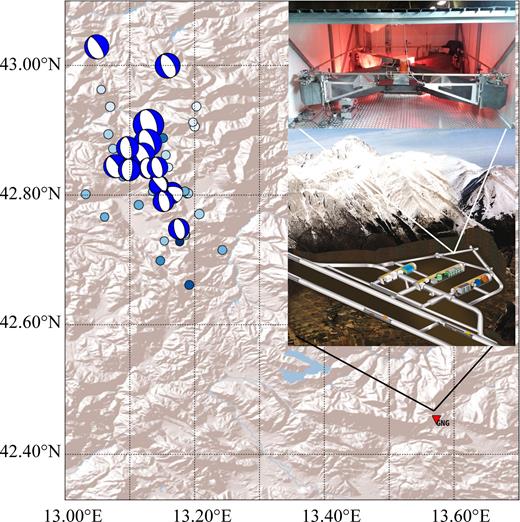Rotational motions from the 2016, Central Italy seismic sequence, as observed by an underground ring laser gyroscope

Simonelli A., H. Igel, J. Wassermann, J. Belfi, A. Di Virgilio, N. Beverini, G. De Luca, G. Saccorotti (2018).
Geophysical Journal International, 214/1, 705-715, https://doi.org/10.1093/gji/ggy186.
Summary
We present the analysis of rotational and translational ground motions from earthquakes recorded during October–November 2016, in association with the Central Italy seismic sequence. We use co-located measurements of the vertical ground rotation rate from a large ring laser gyroscope and the three components of ground velocity from a broad-band seismometer. Both instruments are positioned in a deep underground environment, within the Gran Sasso National Laboratories of the Istituto Nazionale di Fisica Nucleare. We collected dozens of events spanning the 3.5–5.9 magnitude range and epicentral distances between 30 and 70 km. This data set constitutes an unprecedented observation of the vertical rotational motions associated with an intense seismic sequence at local distance. Under the plane-wave approximation we process the data set in order to get an experimental estimation of the events backazimuth. Peak values of rotation rate (PRR) and horizontal acceleration (PGA) are markedly correlated, according to a scaling constant which is consistent with previous measurements from different earthquake sequences. We used a prediction model in use for Italy to calculate the expected PGA at the recording site, obtaining consequently predictions for PRR. Within the modelling uncertainties, predicted rotations are consistent with the observed ones, suggesting the possibility of establishing specific attenuation models for ground rotations, like the scaling of peak velocity and peak acceleration in empirical ground-motion prediction relationships. In a second step, after identifying the direction of the incoming wavefield, we extract phase-velocity data using the spectral ratio of the translational and rotational components. This analysis is performed over time windows associated with the P-coda, S-coda and Lg phase. Results are consistent with independent estimates of shear wave velocities in the shallow crust of the Central Apennines.


Devi effettuare l'accesso per postare un commento.